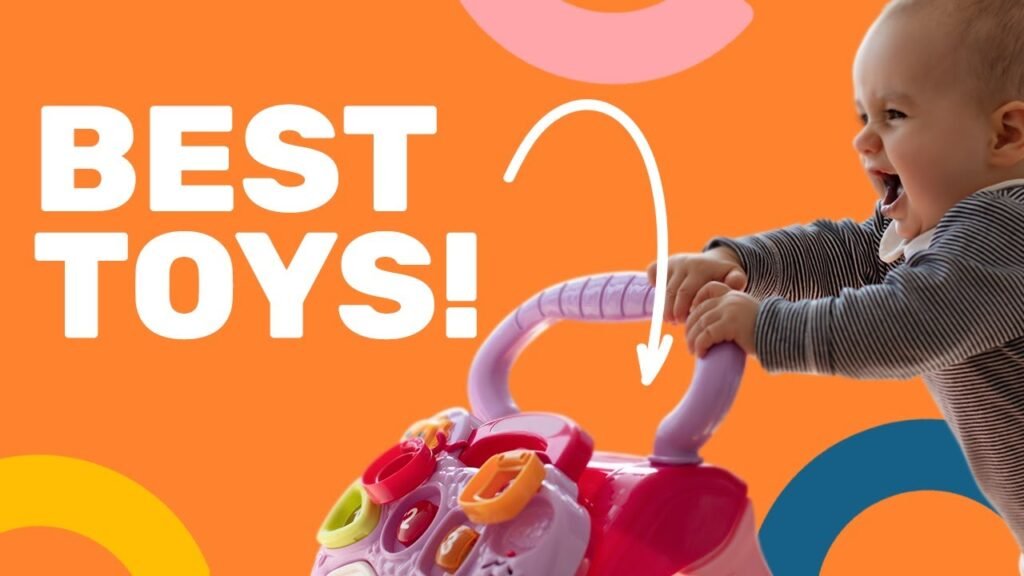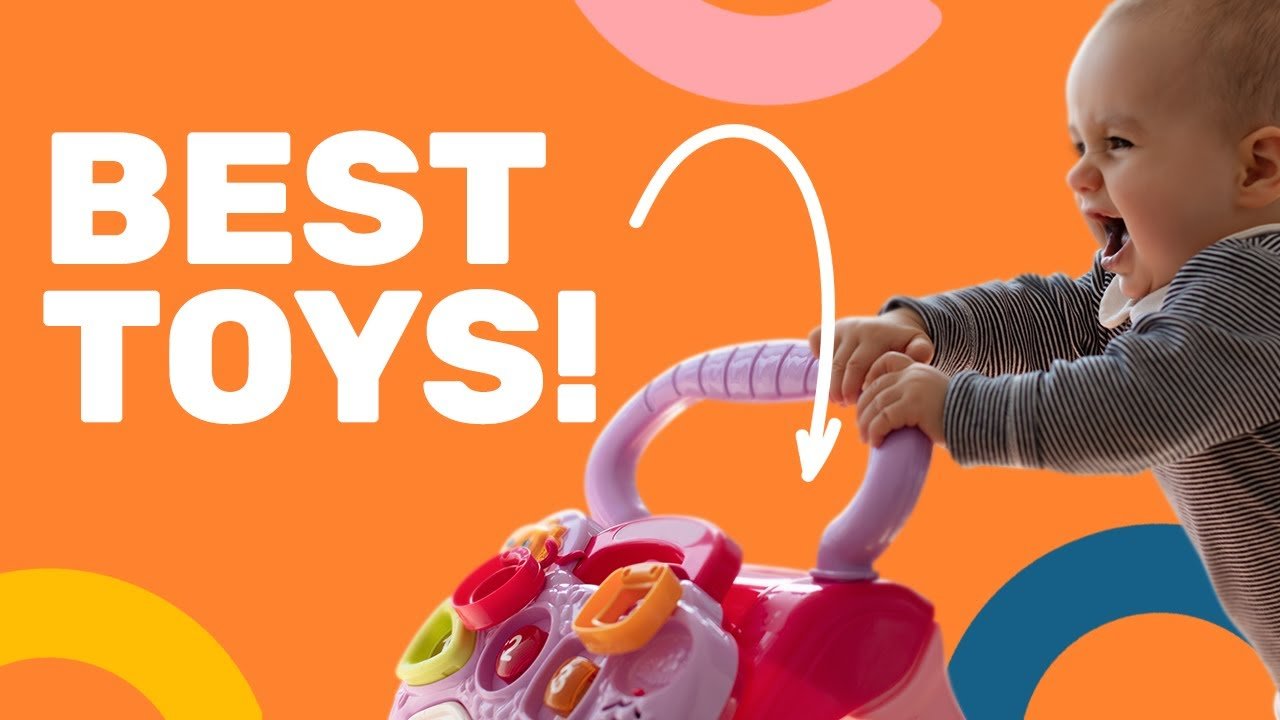Looking to improve your child’s standing balance and motor skills? Look no further than an activity table! In this video, you’ll discover the top 4 toys recommended for gross motor skill development that are both safe and budget-friendly. From baby push walkers to baby gyms and lightweight balls, these toys offer tons of fun while promoting essential skills such as sitting up, reaching, and walking. The video also highlights the importance of avoiding common toys that hinder gross motor development and pose safety risks. So ditch the fancy and expensive toys, and explore these affordable options that will keep your little one engaged and on the right track for healthy development.
Introduction
When it comes to your child’s development, gross motor skills play a vital role. These skills involve the use of major muscle groups to achieve coordination, balance, and movement. Standing balance and motor skills are particularly important milestones that babies need to achieve. Fortunately, there are many toys available that can help support and promote the development of these skills. In this article, we will explore the top toys recommended for improving standing balance and motor skills in babies.
Recommended Toy: Baby Push Walker
A baby push walker is an excellent toy for promoting gross motor skill development. It is versatile and can be used in various stages of your baby’s development. From tummy time to sitting up and eventually walking, a baby push walker can provide endless opportunities for your little one to explore and learn.
One of the major benefits of using a baby push walker is that it helps babies during tummy time. By placing the activity panel of the push walker in front of your baby, they are motivated to lift their head and engage with the bright lights and sounds. This not only strengthens their neck muscles but also improves their balance and coordination skills.
As your baby progresses to sitting up, the baby push walker continues to be an invaluable tool. By placing the activity panel within reach, your baby can move forward and backward to interact with the buttons and keys. This movement helps develop their dynamic sitting balance and overall comfort in shifting their weight, which is crucial for transitioning into crawling.
When your baby is ready to start practicing the high kneeling position, the baby push walker provides excellent support. With the sloped surface of the activity panel, your baby can maintain the high kneeling position while engaging with the interactive elements. This position strengthens their leg muscles and prepares them for standing.
Finally, as your baby gains confidence in cruising along furniture or walking while holding your hands, the baby push walker can be used to facilitate independent walking. By placing the push walker nearby, your baby can hold onto it for support as they take their first steps. With time and practice, they will eventually start walking independently.
Recommended Toy: Baby Gym
Baby gyms are another fantastic toy for promoting gross motor development, particularly neck muscle development and reaching skills. These gyms provide a safe and stimulating environment for your baby to play and explore.
During tummy time, baby gyms encourage your baby to turn their head and strengthen their neck muscles. The hanging toys on the arches grab their attention, and your baby will visually fixate on them and even track them with their eyes. These movements help develop their neck muscles and improve visual skills.
As your baby grows, the hanging toys on the baby gym prompt them to reach out and kick or hit them. This interaction helps strengthen their arm, leg, tummy, back, and neck muscles, which are essential for rolling over, crawling, sitting up, standing, and walking. The act of reaching and kicking also improves their coordination and balance.
Once your baby has learned to sit, you can continue to use the baby gym to encourage them to shift their weight forward or to the side. By hitting or grabbing the hanging toys, they develop their sitting balance and the foundational skills needed for moving from sitting to crawling.

Recommended Toy: Lightweight Ball
A lightweight ball may seem like a simple toy, but it is highly effective in promoting gross motor skills at various developmental stages. Whether your baby is in tummy time, sitting, or standing independently, a lightweight ball can provide a fun and engaging experience while enhancing their motor skills.
During tummy time, rolling a lightweight ball in front of your baby encourages them to lift their head and work on their visual tracking skills. As they become more comfortable, they will reach out to hit the ball, further strengthening their muscles and coordination.
Once your baby can sit up, rolling a large lightweight ball between you and your baby helps them shift their body weight forward or to the side. This movement challenges their balance and improves their dynamic sitting skills. It also helps them learn how to move in and out of sitting, an essential skill before crawling.
When your baby reaches the crawling stage, a lightweight ball can be a powerful motivator. Rolling the ball in front of them encourages them to crawl towards it, promoting their crawling skills and overall strength. Additionally, a large lightweight ball can be used to encourage your baby to stand independently. By holding the ball in front of them, they may accidentally let go of furniture or your hands to grab the ball, boosting their confidence in standing.
Recommended Toy: Activity Table
An activity table is an excellent toy for babies who are starting to stand or cruise. These tables come with interactive elements and toys that help strengthen standing balance and motor skills.
Activity tables introduce your baby to the concept of standing, as they are encouraged to pull themselves up. The moveable parts, such as knobs, buttons, and spinners, motivate your baby to engage and play. The act of moving from the floor to standing and standing for extended periods while playing develops the muscles required for standing and walking.
As your baby’s strength and standing balance improve, they will start to cruise around the activity table. This involves holding onto the table and moving from one point to another while exploring the interactive toys. Eventually, they may let go of the table and stand independently to play, further enhancing their standing and balance skills.
Features to Look for in an Activity Table
When choosing an activity table for your baby, there are a few features to consider to ensure it provides optimal support for their standing balance and motor skill development.
First, look for a table with sturdy construction and stability. Your baby will be pulling themselves up and gripping onto the table, so it needs to be secure and able to withstand their weight. The table should also have a firm and stable base to prevent tipping or wobbling during play.
Interactive elements and toys are another important feature. The more engaging and diverse the activities on the table, the more your baby will be motivated to play and explore. Look for tables with a variety of buttons, knobs, and spinners that produce different sounds or lights. These interactive elements provide sensory stimulation and encourage your baby to reach and manipulate objects.
Lastly, consider an activity table with adjustable height options. As your baby grows and their standing skills improve, you want a table that can adapt to their changing needs. Being able to adjust the height ensures that your baby can comfortably reach and interact with the toys at different stages of their development.
Activities to Enhance Standing Balance and Motor Skills with an Activity Table
Once you have an activity table for your baby, there are several activities you can do to enhance their standing balance and motor skills.
-
Pushing and pulling activities: Encourage your baby to push and pull objects on the table, such as sliders or spinners. This action strengthens their arm, shoulder, and back muscles, improving their overall standing stability.
-
Reaching and grabbing activities: Place toys or objects slightly out of your baby’s reach on the table. This will motivate them to reach and grab, which helps develop their hand-eye coordination and standing balance.
-
Turning and twisting activities: Provide toys that require twisting or turning actions, such as rotating gears or knobs. These activities promote fine motor skills and improve your baby’s ability to maintain standing balance while manipulating objects.
By engaging in these activities regularly, you can enhance your baby’s standing balance, coordination, and motor skills.
Safety Considerations and Potential Risks
While toys, including activity tables, can be incredibly beneficial for gross motor development, it’s important to consider safety and potential risks.
When selecting an activity table, ensure that it is age-appropriate for your baby. Some tables may have small parts that can pose choking hazards for younger babies. Look for age recommendations and choose a table that is suitable for your baby’s developmental stage.
Avoid toys with small detachable parts or sharp edges that could potentially harm your baby. Pay attention to any warnings or safety instructions provided by the manufacturer. It’s crucial to prioritize your baby’s safety above all else.
Always provide proper supervision when your baby is playing with an activity table or any other toy. Even with the most secure and safe toys, accidents can still happen. Supervision ensures that you can quickly intervene if your baby encounters any difficulties or potential risks.
Other Toys to Avoid for Gross Motor Development
While there are many toys that can support gross motor development, there are some common toys that may hinder progress or pose safety risks.
Toys that restrict movement, such as baby walkers with wheels, should be avoided. These walkers can limit your baby’s natural exploration and mobility and may potentially lead to accidents or developmental delays.
Toys with overly stimulating or complicated features may overwhelm your baby and hinder their ability to focus and engage. Choose toys with simple and age-appropriate designs that allow your baby to interact and learn at their own pace.
Be mindful of toys with long strings or cords that can pose strangulation hazards. Keep an eye out for any potential hazards and remove or modify toys as needed to ensure a safe play environment.
Conclusion
In summary, gross motor skill development is crucial for your baby’s overall growth and movement abilities. The recommended toys discussed in this article, including baby push walkers, baby gyms, lightweight balls, and activity tables, provide excellent support and stimulation for standing balance and motor skill development. Engaging in specific activities and providing a safe play environment can further enhance your baby’s progress. Remember to prioritize safety by choosing age-appropriate toys and providing proper supervision. With the right toys and opportunities for play, your baby will be well on their way to achieving important gross motor milestones.

